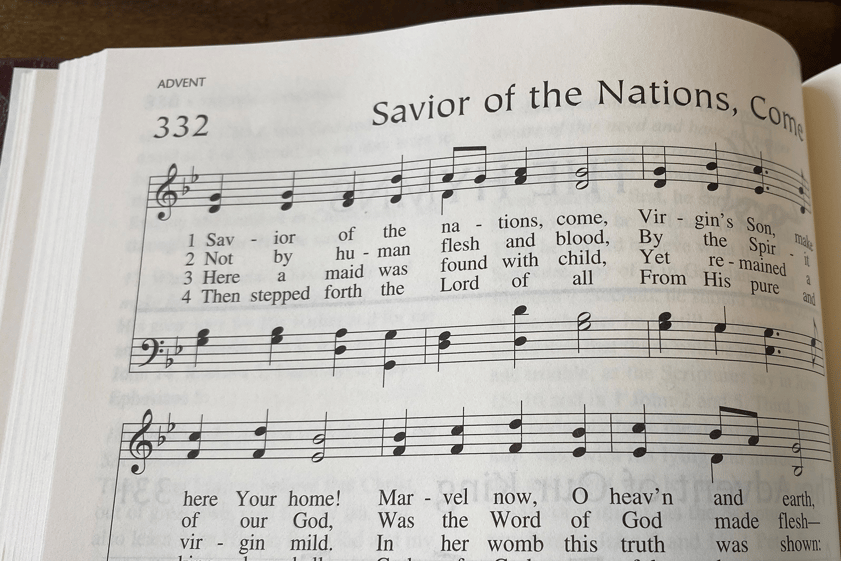This Advent hymn is among the few that can be definitively attributed to the “father of Latin hymnody” himself, Ambrose of Milan. Listen to this beloved hymn and then check out its rich history.
Listen to “Savior of the Nations, Come”
Hymn 332 in Lutheran Service Book
Purchase this setting by William Braun »
Authorship of “Savior of the Nations, Come”
This text, originally in Latin, is one of a handful of hymns whose attribution to Ambrose of Milan is secure. His authorship is attested to by Pope Celestine in 430 and by other early writers. Ambrose, the “father of Latin hymnody,” took
over the Eastern custom of singing hymns and brought it to the West. His hymns were strophic, written in four lines of eight syllables per line, rhymed, objective in character, scriptural, and intended for singing by the people. Many early Latin hymnwriters imitated Ambrose’s general pattern, and their efforts were called “Ambrosian hymns,” although they were not written by Ambrose himself.
Where the Hymn First Appeared
This hymn appears in eighth- and ninth-century manuscripts and in later breviaries. The text has often been truncated in recent hymnals, but Lutheran Service Book uses all eight stanzas.
While pre-Reformation translations into the vernacular are traceable from the fourteenth century, perhaps earlier, [Martin] Luther’s version was probably written during Advent 1523, since it appears in both the Erfurt Enchiridion and in Johann Walter’s Geystliche gesangk Buchleyn of 1524. It is quite a literal translation of the Latin, although Luther reduced the number of syllables in each line from eight to seven.
When the Hymn Is Used in Worship
Medieval breviaries generally prescribed this hymn for Christmas Eve or Christmas Day, but Luther considered it an Advent hymn, as shown by its position as one of only two Advent hymns in the Babst hymnbook of 1545, the last hymnbook for which Luther wrote a preface. Fred L. Precht calls it the Advent hymn par excellence, and it has been the traditional Lutheran de tempore hymn (Hymn of the Day) for Advent 1.
 Eternal Anthems: The Story Behind Your Favorite Hymns
Eternal Anthems: The Story Behind Your Favorite Hymns
Learn more about the words you love to sing in Eternal Anthems: The Story Behind Your Favorite Hymns.
Blog post adapted from Eternal Anthems: The Story Behind Your Favorite Hymns, pp. 140–41, copyright © 2022. Concordia Publishing House. All rights reserved.















.jpg?width=50&height=50&name=IMG_20220621_160541_456%20(1).jpg)